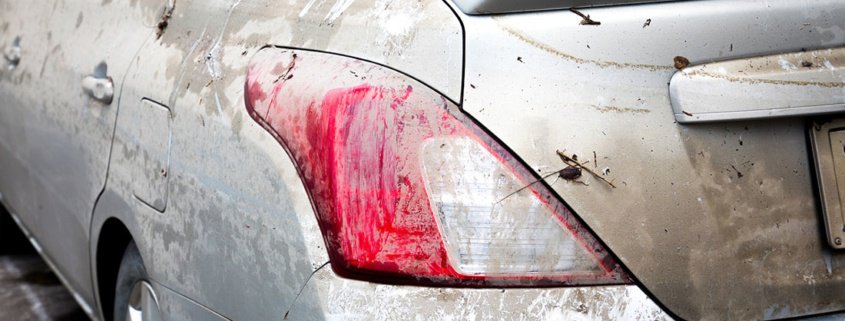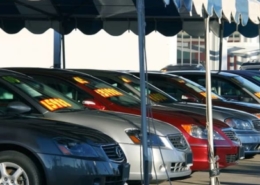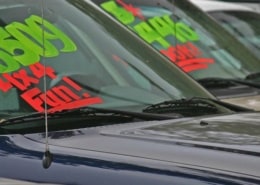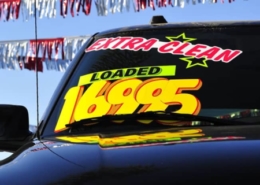Avoid Buying Flood-Damaged Vehicles
Buying a flood-damaged car can have profound implications. An unethical seller can take a vehicle that’s been flood-damaged, give it a fresh coat of paint and new upholstery, and make it look, drive, and smell like a brand new (used) car.
Like fishing, a dealer will put the vehicle out for sale and wait for an unsuspecting customer to bite. Let’s look at how you can recognize and avoid buying a flood-damaged vehicle.
Are Flood-Damaged Cars Risky?
Thousands of vehicles are involved in floods and natural disasters every year. Over half of these vehicles are back on dealer’s lots for sale to the general public. This is big business for scammers, and it happens even more in areas susceptible to hurricanes and major storms.
At first glance, the average car buyer will not be able to tell whether the vehicle has been flood-damaged. By knowing what to look for, you can protect yourself from buying a car that’s been underwater.
If you don’t live by the coast, you may think you’ll never run across a vehicle that’s been underwater. This couldn’t be further from the truth.
Many vehicles involved in floods or other natural disasters are repaired and shipped far away from where the incident occurred.
Floodwaters can seriously damage a vehicle. The computer system, wiring harnesses, and electrical connectors are usually the first things to go from corrosion over time. This can affect operating systems such as airbags, anti-lock brakes, and other electrically controlled safety devices, especially if you’re in an accident.
Once a vehicle’s been underwater, it’s not a question of if a problem will arise; it’s when a problem will arise. Unexpectedly purchasing a flood-damaged car can cause you to lose thousands of dollars. First by paying more than what the vehicle is worth and then losing money when selling the car or trading it in.
How Flood-Damaged Cars Get to the Marketplace
After a vehicle has been flood-damaged and declared a total loss, the insurance company will pay the owner the car’s fair market value. The insurance company will send it to either a salvage yard or an auto auction to recoup as much money as possible.
This is where unscrupulous buyers pick up flood-damaged vehicles for pennies on the dollar. Buying the car cheap allows them to spend money on it and bring it up to “just like new” condition. After reconditioning the vehicle, they still own it much cheaper than the wholesale value.
These “like new” vehicles are sent to other parts of the country not directly affected by hurricanes or floods. They are crossing state lines and being titled repeatedly until the title is washed free of the brand. Once the titles are washed, the vehicle is sent to auction or placed for sale on a dealer’s lot, waiting for an unsuspecting customer to buy the car.
There are individuals and companies that all they do is recondition flood-damaged and salvage vehicles with the intent to sell them to the public. When one of these vehicles is sold, the seller is supposed to disclose the title’s been branded to the buyer. Unethical sellers conveniently forget when there are thousands of dollars to be made from an unsuspecting buyer.
You can protect yourself from buying a flood-damaged car by using the vehicle’s VIN to acquire a vehicle history report to see if a car has ever been flooded or had a branded title.
How to Recognize a Flood-Damaged Vehicle
You can find flood-damaged cars anywhere vehicles are sold. You can find them on little corner lots or at big franchise dealerships.
Remember, the person selling the car might not even know it’s been in flood. I’ve seen many flood vehicles in my career; I’ve even accidentally bought a few.
There are a few tell-tale signs of flooding. Here are five simple steps appraisers across the country and I use to inspect a vehicle to determine if it’s been previously underwater.
1) Inspect the Interior of the Vehicle
When opening the vehicle for the first time, take a deep breath and see if you smell a musty or moldy odor. Look under the dashboard for any brittle wires, mud, or grit in crevices. Also, check for condensation or water lines behind the instrument panel and gages.
Check the trunk area and look under the carpet or around the spare tire for any evidence of odors, standing water, mud, or salt residue.
Look at the carpet; make sure it matches throughout the vehicle. Has it been replaced or recently shampooed? Look under the vehicle’s carpet for salt or water stains from evaporated water.
Check for mud, grit, water stains, salt residue, or rust on screws in consoles, change holders, and the glove box. You will not generally find these items unless the vehicle was previously underwater.
Look under the carpet and the area where the carpet meets the dashboard for any signs of rust or corrosion on any metal surfaces.
Check small crevices on the dashboard for salt residue or stains. Inspect the door panels, upholstery, and door panels for any fading, water lines, waves, peeling, or odor.
2) Check the Engine Compartment
Check under the hood for any evidence of grit and water suspected from the vehicle being submersed. Look for possible salt residue from evaporation on the firewalls and engine itself.
Check for grit, corrosion, or discolored mud in engine crevices, alternator crevices, power steering pump, recesses of starter motors, behind or around wiring harnesses, etc.
3) Look Under the Vehicle
Look under the vehicle for any packed mud or grit in or around components like front or rear axles, brakes, gas tank, or spare tire (if stored underneath the vehicle).
Check for any corrosion, rust, or flaking you would not usually find on a later model vehicle.
4) Research the History of the Car
You can do this using an online company such as AutoCheck® by Experian. Reviewing a used car’s vehicle history report will not only let you know if the vehicle’s been flood-damaged, but it’ll also let you know if there are any other title or odometer problems.
Be careful with fly-by-night companies that offer cheap vehicle history reports. They will not provide you with all the information that may be available on the vehicle. You can read my vehicle history report guide to learn more.
5) Have the Vehicle Inspected by a Mechanic
A vehicle history report is not an alternative to having the car inspected by an independent certified mechanic. Before signing the paperwork on any used car, I highly recommend having it inspected by a certified independent mechanic.
Please take it to a mechanic of your choice. Tell him you’re looking to purchase the vehicle and would like him to put it on a lift and tell you if it is a reliable vehicle.
In Conclusion
Tens of thousands of flood-damaged vehicles move across the country daily. Repair facilities are doing a much better job cleaning up these cars, making it harder for the average car buyer to notice.
Unethical sellers know they can’t fool everybody, but people keep unknowingly buying flood-damaged cars. Arming yourself with the knowledge above dramatically decreases your chances of owning a vehicle involved in a flood.









